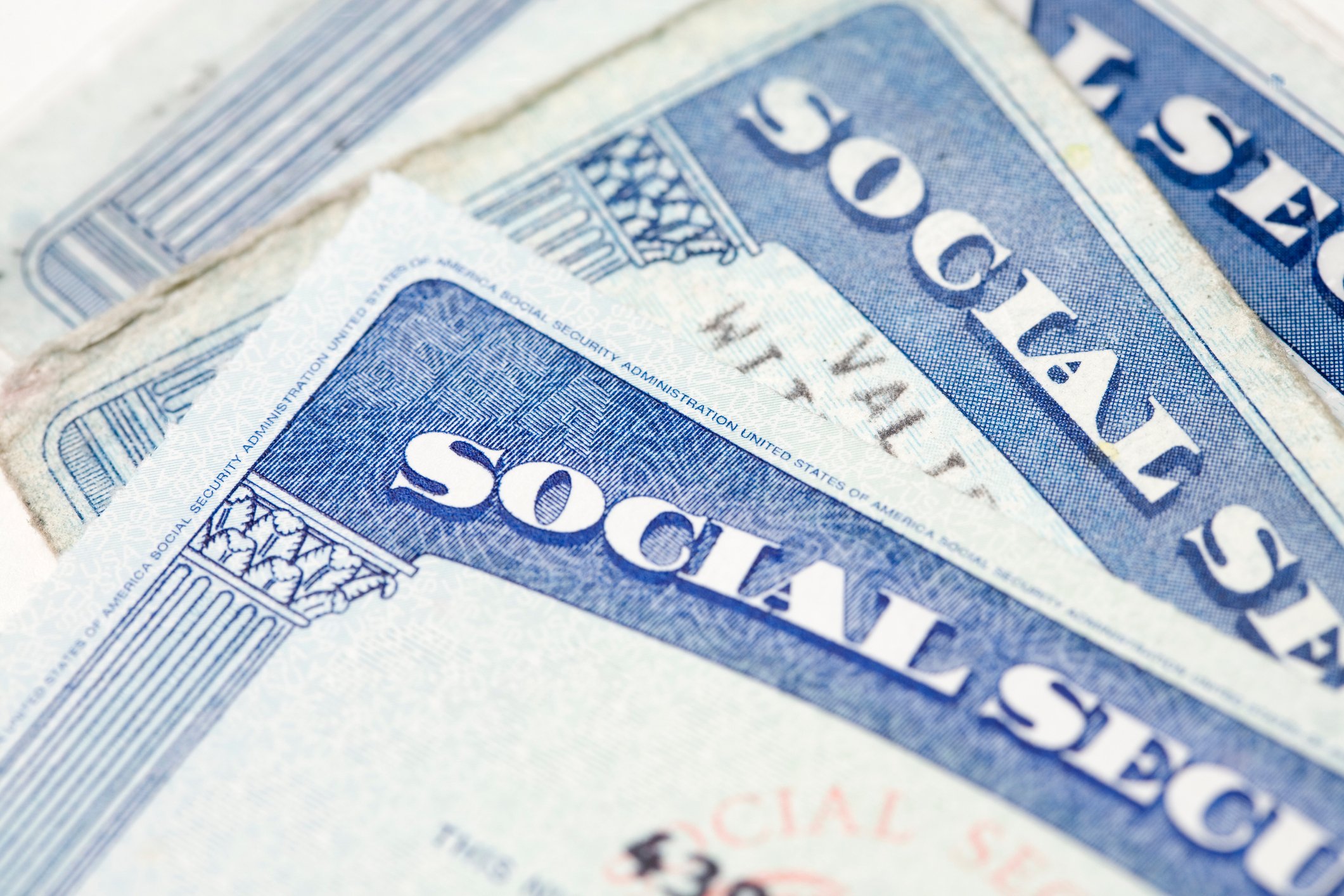As many of you are probably aware, our nation's most storied social program is facing its biggest challenge in its nearly 85-year history.
According to the annually released report from the Social Security Board of Trustees, the program is staring down a $16.8 trillion funding shortfall between 2035 and 2094. This shortfall is the result of more than a half-dozen ongoing demographic changes that are expected to completely deplete Social Security's asset reserves by 2035 and effect what might be sweeping benefit cuts for retired workers of up to 24%.
Mind you, all of this was happening well before the coronavirus disease 2019 (COVID-19) pandemic took hold. The problem is, the physical and financial toll rendered by COVID-19 is only making matters worse for Social Security.

Image source: Getty Images.
As you can imagine, a high unemployment rate is bad news for a program that relies on payroll tax revenue for approximately 89% of collected income. Additionally, record-low yields mean less in the way of interest income for Social Security's approximately $2.9 trillion in asset reserves.
But there's far more going on here than meets the eye. Below you'll find five surprising ways that COVID-19 is crushing Social Security's long-term outlook and potentially reducing the amount of money seniors will be able to take home.
1. COVID-19 is capping wage growth
Though unemployment data paints a grim picture, the far bigger issue for Social Security might be the low-inflation environment that could persist for many years to come.
As noted, the 12.4% payroll tax on earned income, such as wages and salary, is Social Security's revenue-collecting workhorse. It was responsible for $944.5 billion of the $1.06 trillion collected in 2019. Generally speaking, the more money workers make -- up to $137,700 (the maximum taxable cap) -- the more revenue Social Security can bring in.
However, a low-inflation environment (i.e., one where the price of goods and services rise slowly) suggests that employers will be less willing to pass along substantive wage increases to their workers. If wage growth slows, so will the ability to Social Security to collect additional payroll tax revenue in subsequent years.

Image source: Getty Images.
2. It may lead to lower initial benefits
While most people, myself included, have been focused on the short-term perils of a high unemployment rate and how it'll hurt Social Security's revenue collection, they're overlooking the longer-term impact of COVID-19 on initial benefits.
With businesses cutting hours or laying off workers in response to COVID-19, these actions could directly affect the initial benefits received by future retirees.
As a refresher, the Social Security Administration takes a workers' 35 highest-earning, inflation-adjusted years into account when calculating their monthly benefit at full retirement age. In 2020, and perhaps 2021, it would not be surprising to see earned income for a lot of workers decline due to unemployment, reduced hours, or reduced bonuses/commissions. Over the long run, this reduced earning capacity in 2020 and/or 2021 could lead to a lower initial Social Security benefit for retired workers.

Image source: Getty Images.
3. A reduced or nonexistent COLA, leading to a loss of purchasing power
Another problem caused by the coronavirus pandemic is that it could exacerbate the loss of purchasing power associated with Social Security income.
While I've covered, in depth, how the Social Security Administration calculates cost-of-living adjustments (COLA) every year, the key point to be aware of is that COLA is dependent on changes in the program's inflationary tether, the Consumer Price Index for Urban Wage Earners and Clerical Workers (CPI-W). The CPI-W has more than a half-dozen major spending categories, and a number of those categories are demonstrating signs of deflation (i.e., falling prices).
Based on inflation data from the U.S. Bureau of Labor Statistics, the CPI-W declined by 0.1% on a trailing 12-month basis, through May 2020. Further, the Consumer Price Index for All Urban Consumers (CPI-U), a similar inflationary measure to the CPI-W, showed significant deflation in energy, apparel, and transportation services on an unadjusted 12-month basis, through May.
Put plainly, COVID-19 is crushing current beneficiaries' hopes of receiving a COLA in 2021. Without a COLA next year, the purchasing power of Social Security income will probably decline since medical care service inflation remains high.

Image source: Getty Images.
4. Lower net legal immigration
The COVID-19 pandemic has also caused governments around the world to adjust their policies, if even temporarily, on immigration. In the United States, President Trump issued an executive order that halted green cards for new immigrants, as well as certain temporary work visas, through the end of 2020.
What you may not realize is that immigration plays a key role in preserving the financial health of the Social Security program. The annual Trustees report notes that the program counts on a steady stream of net legal migration into the U.S. to help offset the number of people leaving the workforce. Since many of these legal migrants are young, they'll spend decades in the labor force generating payroll tax revenue for Social Security before one day securing a retirement benefit of their own.
The precautions being taken to prevent the spread of COVID-19 by substantially reducing net legal immigration could ultimately lower the worker-to-beneficiary ratio and make it significantly more expensive to fix Social Security's funding shortfall.

Image source: Getty Images.
5. A record-low birth rate
Finally, most folks are probably overlooking how COVID-19 is going to impact birth rates.
On the surface, you might think that being stuck at home for months or weeks on end with your significant other could be the perfect recipe to create baby boom 2.0. But that's not the case. The economic disruption caused by the coronavirus pandemic is unlike anything we've seen in almost 90 years, and that's more than enough to get couples to reconsider having children.
Even before the COVID-19 pandemic, birth rates in the U.S. were at an all-time low. Beyond just economic and financial concerns, access to contraceptives has improved, marriages are being delayed, and fewer couples are having unplanned pregnancies.
The issue for Social Security is that a certain birth rate level is needed to ensure that the stability of the worker-to-beneficiary ratio. If birth rates remain persistently low, there won't be enough new workers to replace retirees in, say, 20 years.
The coronavirus pandemic is doing quite the number on the Social Security program, and it would not be in the least bit surprising if the asset reserve depletion timeline or funding obligation shortfall have worsened considerably when the next Trustees report is released in 2021.





